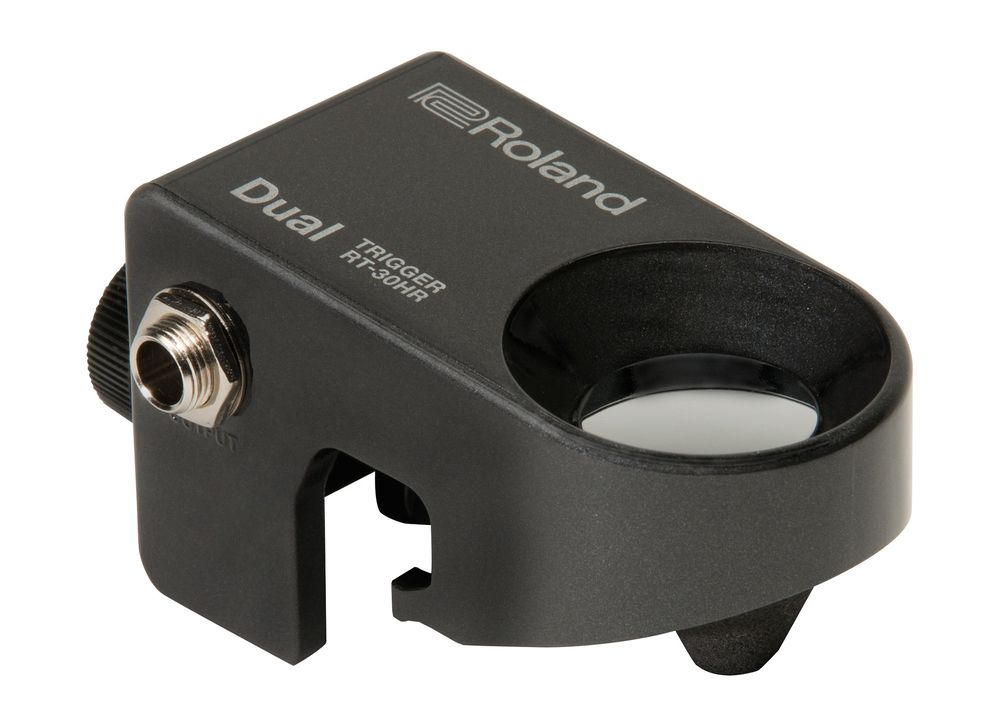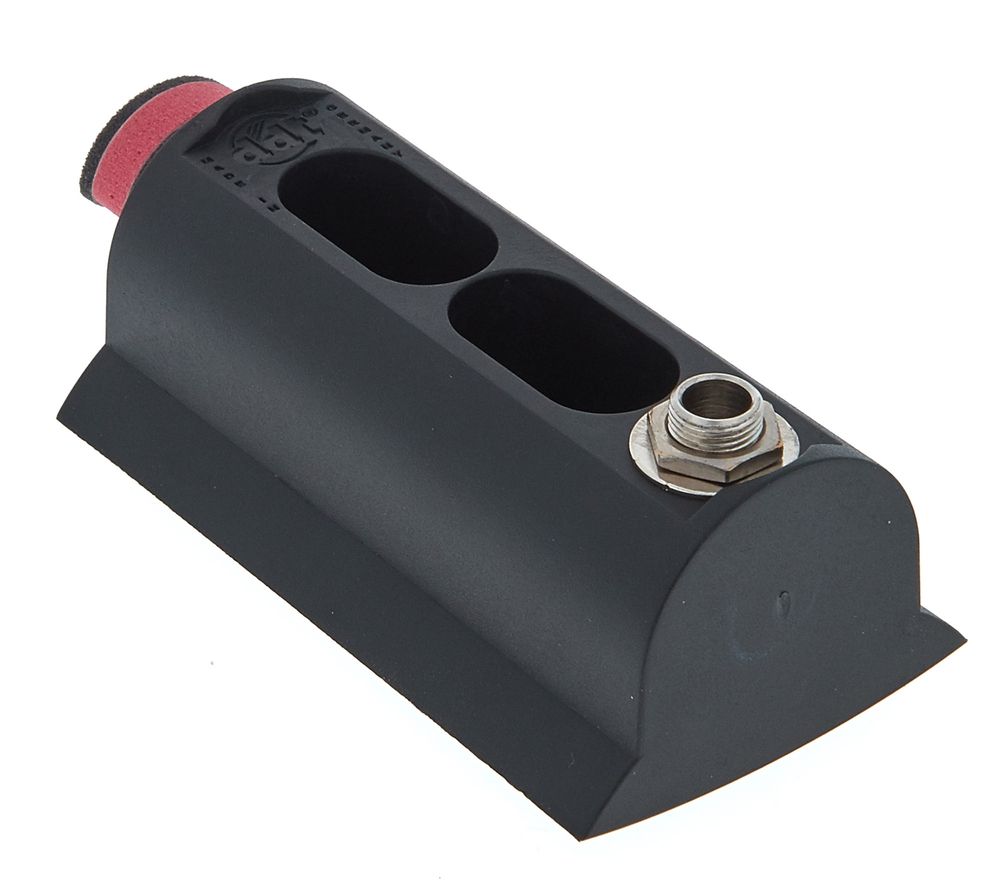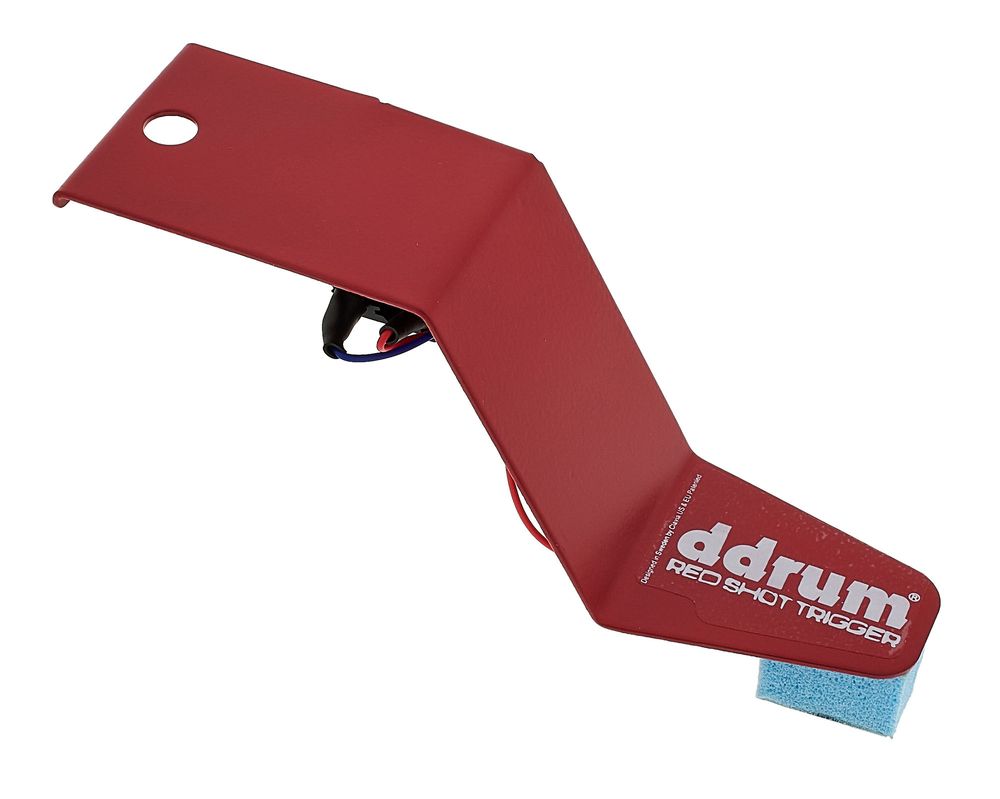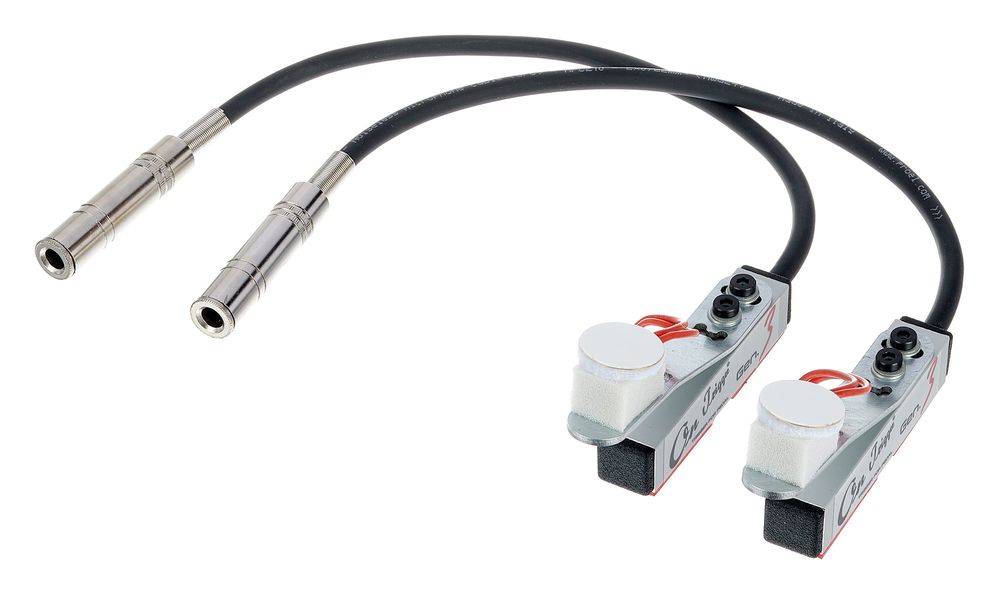8. Trigger and Hybrid Kits
Fixed triggers are located both in rubber pads and under mesh heads, which transmit the strike impulse to the module. However, triggers are also available as separate components, which makes it possible to use acoustic drums as trigger pads.
The common external triggers are attached to the drum rim and generally work with both traditional heads and mesh heads. A sturdy housing protects them from accidental stick hits. Rim triggers are available for the snare, toms, and bass drum, each optimized for this purpose. In addition to mono versions, there are also dual triggers that can differentiate between head and rim sounds. Alternatively, triggers are available that can be attached to the inside of the shell. Overall, the number of different triggers on the market is relatively limited, and good drum modules already have the most common models pre-configured, making installation and fine-tuning very easy.

Roland RT-30HR Dual Trigger

ddt In-Shell Trigger Snare / Tom
Acoustic Set with Mesh Heads and Triggers
If you want to use your acoustic drum set exclusively to trigger external sounds, you can replace the drumheads with mesh heads and attach triggers, which are then connected to the drum module. The resonant heads can remain on the drums. For the pickup of the non-triggered cymbals, two overhead microphones are usually sufficient in most cases. The advantage of such a setup is mainly in live applications. Only the output of the drum module and the two overheads go to the mixing console. This allows you to create a fantastic drum sound in no time, and lengthy sound checks are a thing of the past. As a drummer, you have a regular drum set in front of you, which works better on a large stage than an e-drum set.
Acoustic Set with Drum-Pads
If you want a mix of an acoustic set and electronic sounds, many drummers choose to equip the bass drum with a trigger to "fatten up" the sound or give it more power. The trigger is usually attached to the rim, but there are also models that can be installed on a tension rod or under the footplate of the kick pedal. External drum pads can be added to incorporate electronic sounds or samples, such as handclaps or tambourine sounds, anywhere in the drum kit. The possibilities are endless. If you need many pads in a small space, a sampling pad (see chapter 7) could be a good solution.

DDrum DDRS Kick Trigger Red Shot

On Trigger Bass Drum Trigger Jack





